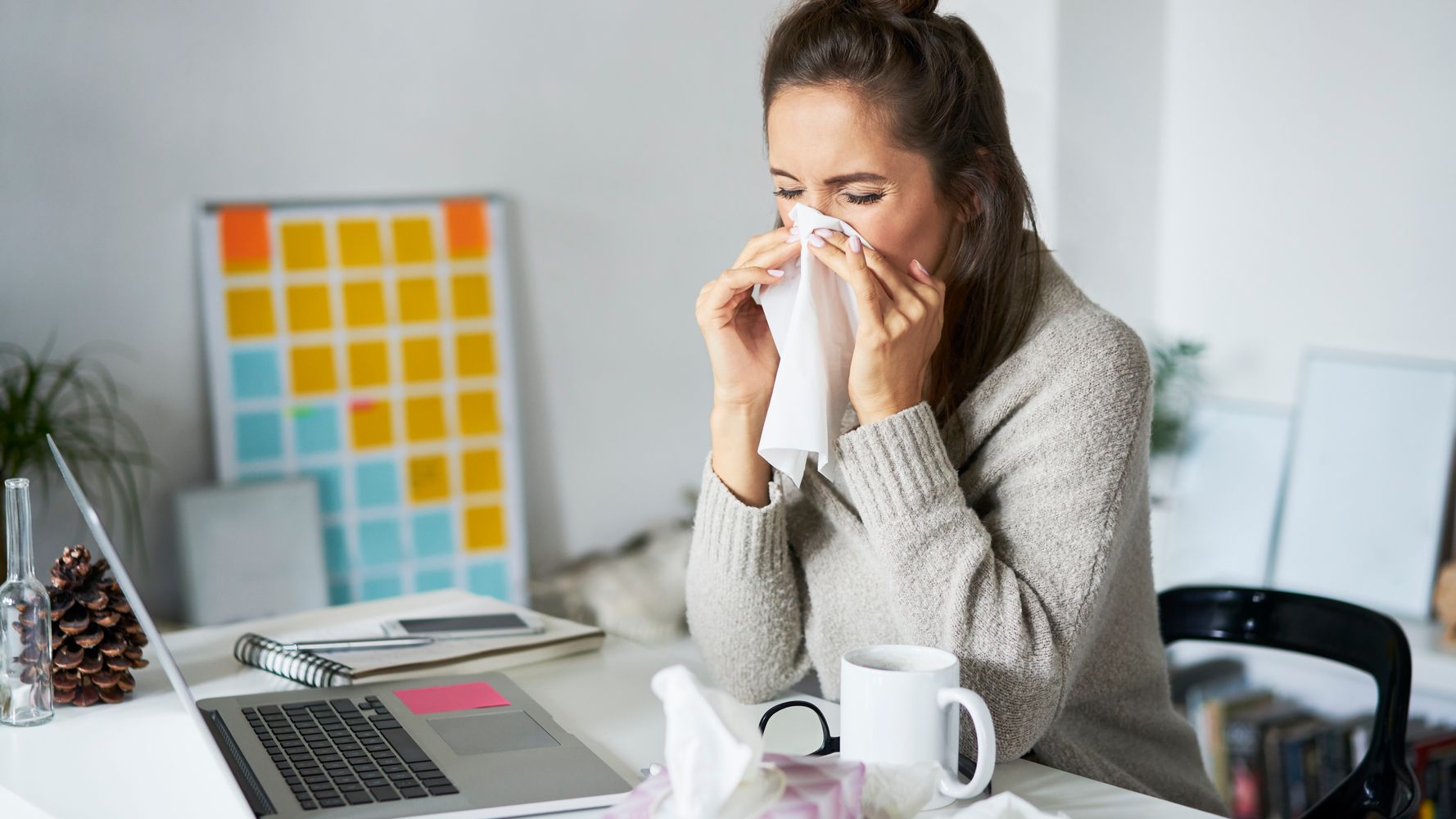The current COVID-19 variants are more transmissible than ever, leading to a higher rate of infection throughout the country and increased risk associated with most activities.
“The current variants, which are BA.4 and BA.5, constitute for about 82% of our current variants within our health system,” Dr. Janak Patel, director of the Division of Infectious Disease and Immunology at the University of Texas Medical Branch, told HuffPost.
The current strains are unique for reasons beyond their transmissibility, too. They also can cause some different symptoms compared to earlier strains of the virus.
Here, experts share the COVID-19 symptoms that are most common right now and other differences they’ve seen with these current variants.
Like other recent variants, a sore throat is a very common symptom with BA.5.
According to David Souleles, the director of the COVID-19 Response Team at the University of California, Irvine, the most common symptoms of recent COVID infections include coughs, congestion fatigue and headaches.
One of the most ubiquitous issues, though? “Sore throats are very commonly reported,” he said.
However, it’s important to remember that this may not be exclusive to BA.5. It takes the scientific community time to compile recent infection data since variants change so quickly, Souleles said. And the medical community doesn’t know on an individual patient level who has what variant. Plus, if you test with an at-home test, there’s no way of knowing what variant you had.
Overall, people feel pretty sick or wiped out when they have it.
“[This strain is] causing bad cold to flu-like illness,” said Dr. Pritish Tosh, an infectious diseases physician and researcher at Mayo Clinic. And exact symptoms and severity tend to vary depending on many factors, including age, medical history and infection history.
But, Souleles said “if you talk to the average person who had COVID, many will tell you it’s the sickest they’ve ever been without going to the hospital.”
Think persistent headache, frequent cough and restless nights as a result. Plus, the overwhelming anxiety that having COVID-19 brings. Additionally, there’s also the risk of long COVID. It’s estimated that about 16 million people may have the condition after being infected with the virus. So, even though the symptoms may be described as or seen as mild, there are still issues that can happen.
The Good Brigade via Getty Images
You probably won’t lose your sense of taste and smell.
“Loss of taste and smell was a very common symptom that was reported in earlier variants of COVID-19,” Souleles said. “We’re hearing that a lot less than we used to.”
This likely has to do with how the virus has mutated, and how it interacts with the parts of our brain that govern taste and smell, he added.
It appears people are getting infected and seeing symptoms faster.
According to Souleles, people are testing positive after exposure at a faster rate than earlier in the pandemic.
A year ago, it “might have been more like seven to 10 days after their exposure period,” he said. Now, most people will test positive three to five days after exposure.
“We’re definitely seeing a more rapid progression to symptoms after exposure.”
‘Breakthrough’ infections aren’t leading to issues or symptoms that land people in the hospital as frequently as previous variants.
“[BA.5] is a variant that can evade antibodies from other recent variants,” Tosh said.
But, the reason most people aren’t experiencing outcomes like hospitalizations or death has to do with the built-up immunity that many of us have, whether that’s from vaccinations, prior infections or both. And that protection goes beyond antibodies; it’s also because of our T-cell immunity, which increases every time we get vaccinated, boosted or infected.
“Antibodies keep people from getting infected,” Tosh explained. “T-cells keep people from getting super sick” and requiring hospital care.
T-cells are far more robust in keeping people from getting very sick from different variants, including from the current BA.5 subvariant.

ShotPrime via Getty Images
Those who are unvaccinated are still at high risk for severe outcomes.
“We know that the vaccines continue to provide pretty good protection from the more serious outcomes that would result in hospitalization or death,” Souleles said. And when you look at hospital data across the country, the majority of folks who end up in the hospital because of COVID-19 are unvaccinated or not fully vaccinated.
“[Unvaccinated people] are getting more of those severe outcomes that we might have seen earlier in the pandemic when we didn’t have vaccines or medicines like Paxlovid,” he said.
Keep in mind that it’s not guaranteed that unvaccinated people will become more ill, there is just a higher chance that they will face more severe outcomes.
Because of the sheer number of vaccinated people in the country, you may notice an uptick in vaccinated individuals in hospitals. Still, vaccinated people are getting hospitalized at a much lower rate than those unvaccinated. In New York for example, for every 100,000 hospitalized, 1.7 are vaccinated and 11.5 are unvaccinated.
Immunocompromised folks are still at high risk of severe outcomes, too.
Roughly 3% of the country is considered immunocompromised, which includes people with health conditions like certain kinds of cancer, diabetes and HIV.
High-risk people are more likely to face severe outcomes from COVID-19, including hospitalization and death. While some people may report cold-like symptoms from a BA.5 infection, those who are immunocompromised could face a much more grim reality.
That’s why it’s important for immunocompromised individuals to get all of their vaccinations and for everyone to follow smart health precautions — especially when coming into contact with someone who is high risk.
To stay healthy, use the mitigation measures that we know work.
Vaccinate, boost, wear a mask, test before attending events, test three to five days after you have had a known exposure, and isolate if you’re sick, Souleles said.
“All of those things that have applied throughout the entire pandemic apply to BA.5 and all of the variants of omicron. We have the tools to control this, we know what to do.”
Experts are still learning about COVID-19. The information in this story is what was known or available as of publication, but guidance can change as scientists discover more about the virus. Please check the Centers for Disease Control and Prevention for the most updated recommendations.


